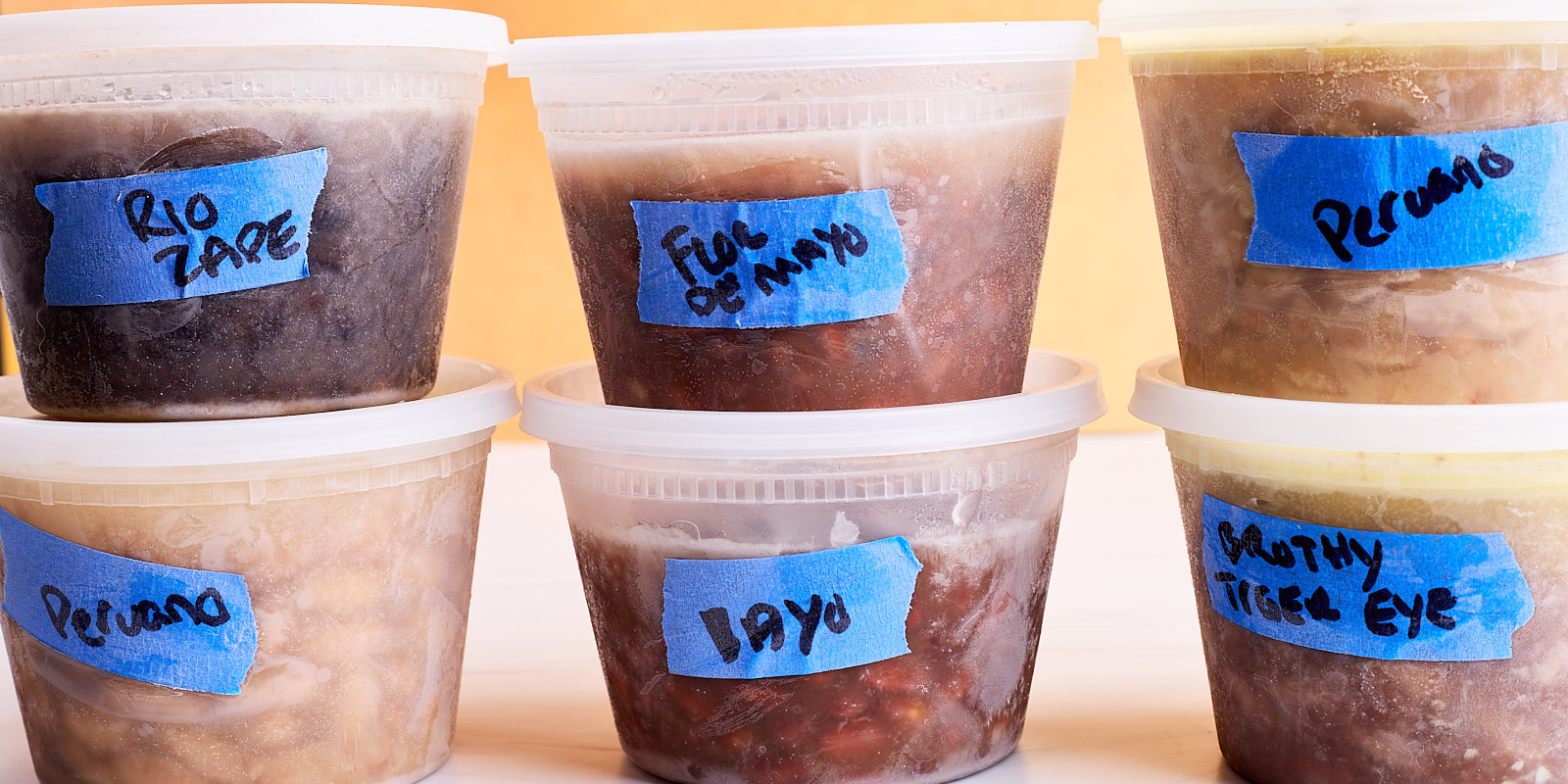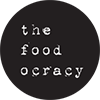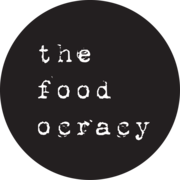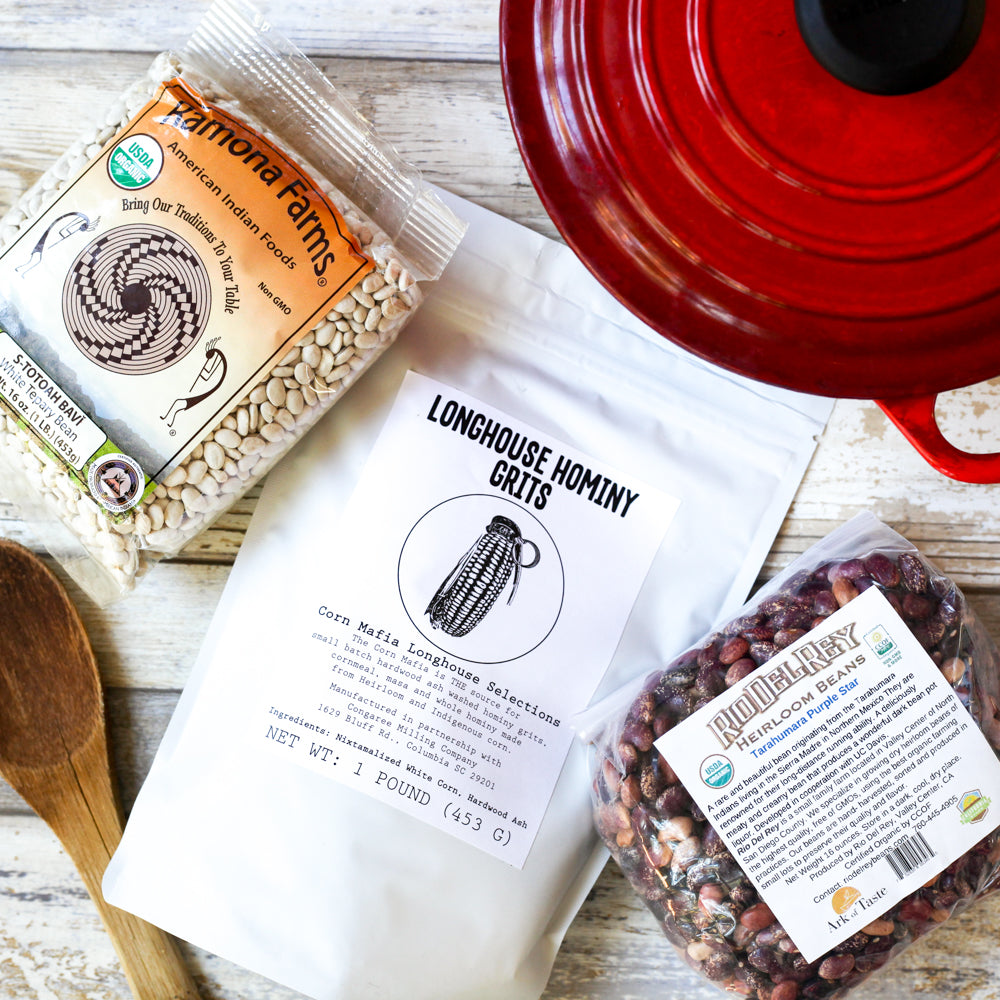Flat Rate Shipping $10.99
Flat Rate Shipping $10.99

How To Freeze Beans
August 22, 2025 5 min read
How to Freeze Beans: Your Secret Weapon for Quick, Healthy Meals
I've found that the key to incorporating more healthy, delicious beans in my diet is simply having them cooked and available. Sometimes you just don't have time to cook a pot of beans though. The solution is simple. Freezing beans in their liquid gives you ready-made healthy, wholesome heirloom beans with the convenience of canned.
I highly recommend cooking beans a pound at a time right when you get them and they are at the peak of freshness, then portioning them into 1 1/2 cup portions so you can substitute for canned beans in all of your favorite recipes. It's a way to level up pretty much every recipe and the best part is that you know what farmer grew your beans, how they were grown and you controlled everything from the amount of salt to the water used. That can sitting in your pantry? Not so much. I've tested dozens of bean varieties and freezing methods and the conclusion is surprisingly simple.

Why Freeze Beans?
Life happens. Sometimes you're craving a hearty minestrone on a Tuesday night but the thought of waiting 1-3 hours for beans to cook makes you reach for that sad can instead. Frozen beans bridge that gap between convenience and quality. When you have a freezer stocked with perfectly cooked beans, you're always just minutes away from adding protein, fiber, and incredible flavor to any meal.
Think of it as meal prep for the bean-obsessed. One Sunday afternoon of cooking becomes weeks of easy dinners, quick lunches, and spontaneous soup making. Plus, there's something deeply satisfying about opening your freezer to see rows of beautiful beans ready to transform into whatever your heart desires.
Dry Beans vs. Canned: Why It Matters
Don't get me wrong, canned beans have their place. They're convenient and perfectly fine for many recipes. But once you start cooking with dry heirloom beans, there's really no going back. The flavor difference is remarkable – these ancient varieties have been selected for taste over profit, and it shows.
Dry beans also give you complete control over texture. You decide how firm or creamy they become. You control the salt level. You know exactly what's in that pot – no mysterious preservatives or additives. A pound of dry beans makes 7 cups of cooked beans which is equal to 4 cans, meaning there really isn't that big of a price difference between a can of grocery store beans and beautiful heirloom beans grown on a small farm.
The environmental impact is worth considering too. Less packaging, less processing, less transportation weight all add up to a much smaller carbon footprint. It's a small way to eat more thoughtfully.
Cooking Your Beans: The Foundation of Great Frozen Beans
Before you can freeze beans, you need to cook them properly. This is where many people go wrong – they don't season the beans, thinking they'll do it later, or they overcook and end up with totally mushy beans once thawed.
Our two non-negotiable rules: always add salt before cooking and add kombu to the pot. I know you've heard famous chefs say never to salt beans while cooking, but science proves this kitchen myth wrong. Salting the water allows the skin to soften properly and the interior to hydrate evenly. This prevents those annoying blown-out beans with tough skins.
Kombu is your secret weapon. This seaweed contains natural glutamates that enhance flavor like nature's MSG, plus amino acids that help soften the bean skins for better texture and they make the beans more digestible so you have significantly less issues with gastrointestinal distress. Trust me on this one.
For complete cooking instructions and all our tested tips, check out our ultimate guide to cooking heirloom beans. Whether you're using a pressure cooker, slow cooker, or stovetop method, the principles remain the same: good salt, kombu, and patience.
What to Freeze Your Beans In
I'm a re-use girl. I try and never buy plastic containers but I save every yogurt container and takeout tub for freezing beans. It worked fine, but lately I've been thinking more about microplastics and their potential health impacts.
Glass containers are looking appealing these days. They go straight from freezer to microwave without worry, and you can see exactly what's inside. The downside? They're heavier and take up more space in the freezer. When one falls out of the freezer on your foot it leaves a mark!
There are some clever silicone solutions available online too – flexible enough to pop out frozen portions easily, safe for the microwave, and reusable indefinitely. Whatever you choose, make sure your containers seal well to prevent freezer burn.
How to Freeze Beans: The Simple Truth
Here's where I'm going to save you from overthinking this: simply freeze the beans in their cooking liquid, making sure the beans are fully submerged. That's it. The cooking liquid protects the beans from freezer burn and maintains their creamy texture.
Do not forget to label them. I learned the hard way that labels don't stick well after they've been in the freezer. I now write directly on masking tape with a Sharpie – bean variety and date. Future you will thank present you.
The one exception to this rule is garbanzo beans. For these, strain them and briefly dry them on a kitchen towel before popping them in your freezer container of choice. This makes it easy to pull out a handful to toss on a salad or scoop out the exact amount needed for any recipe on a moment's notice.
Thawing and Using Your Frozen Beans
To thaw beans, place the frozen container in a bowl of room temperature water. To speed things up, dump it into a microwave-safe container and slowly thaw on a low setting. Sometimes I remember to put them in the refrigerator the night before, but let's face it – if I was thinking that far ahead, I'd probably just cook a new pot of beans!
The beauty of properly frozen beans is that they taste virtually identical to freshly cooked ones. Use them in any recipe that calls for cooked beans. They're perfect for soups, stews, salads, pasta dishes, or just warmed up with good olive oil, salt, and pepper for a simple side dish.
To busy cooks everywhere: you're welcome. This simple technique will transform your weeknight cooking and ensure you always have the building blocks for a satisfying, healthy meal at your fingertips.
Leave a comment
Comments will be approved before showing up.
Recent Articles
About Us
Foodocracy is dedicated to creating a more sustainable and independent food system. We support small, independent farms across the nation.
Get impossible to find beans and grains shipped direct to your doorstep each month from small family farms.
We support small, family owned farms across the nation. Did you know that farmers only make an average of 10 cents on every dollar you spend at the supermarket? Working directly with farms and not middle men ensures that more money goes back to the people actually growning your food.
Subscribe
Sign up to get the latest on sales, new releases and more …



